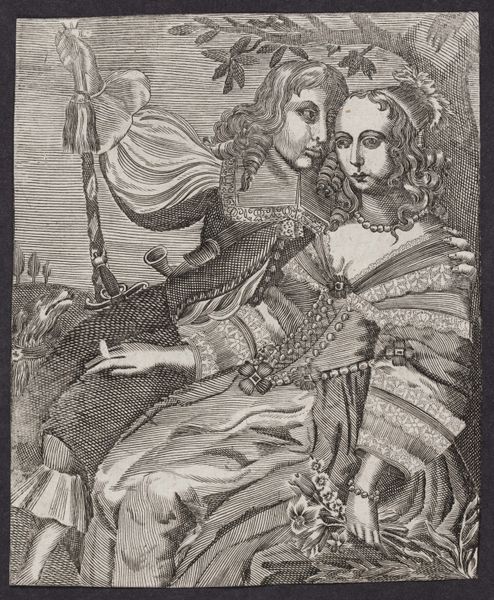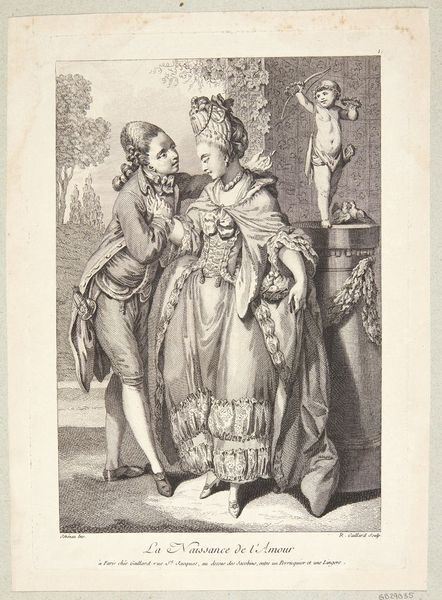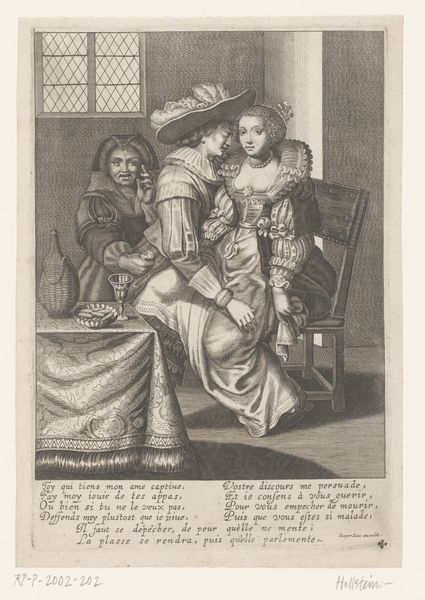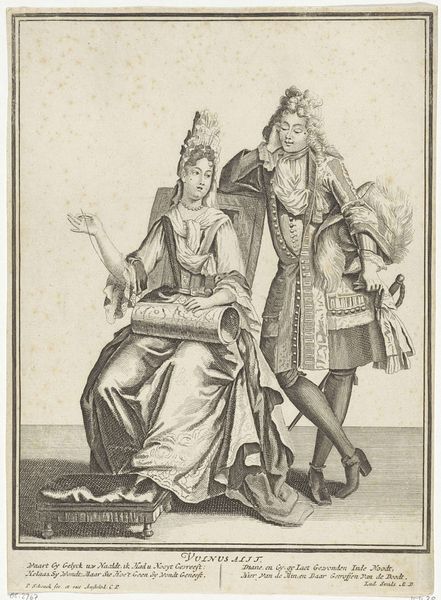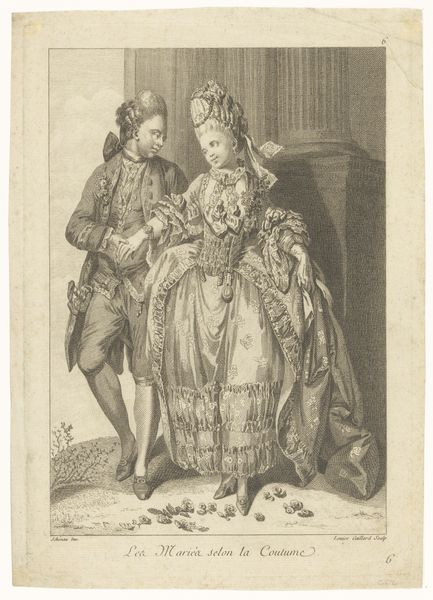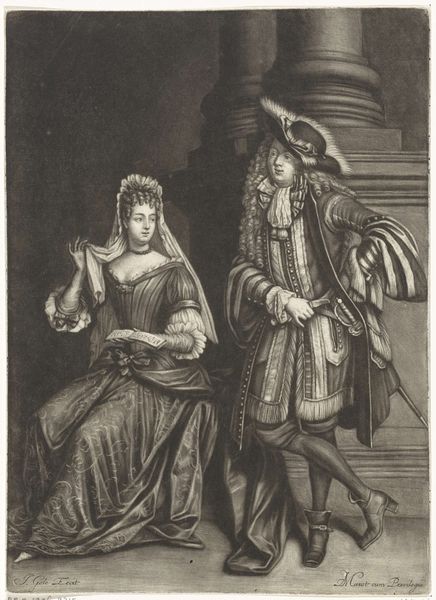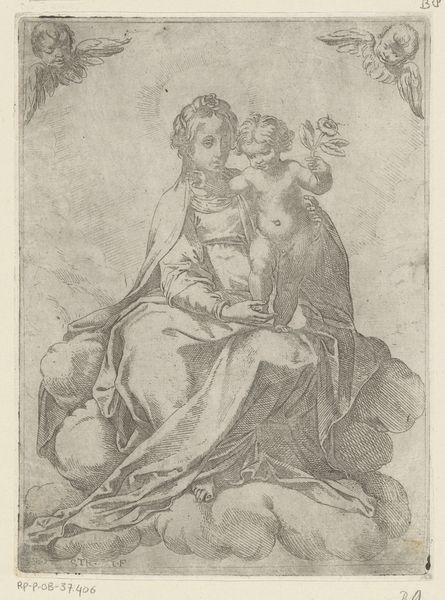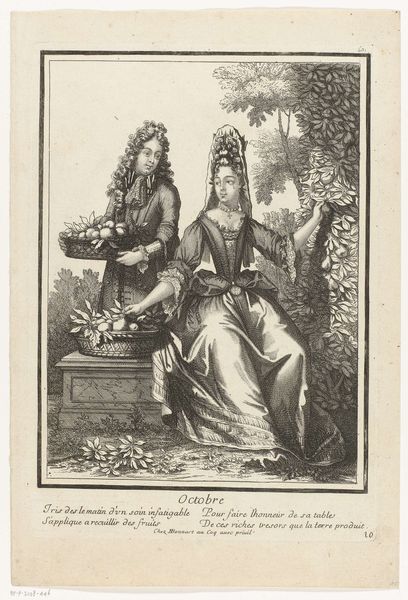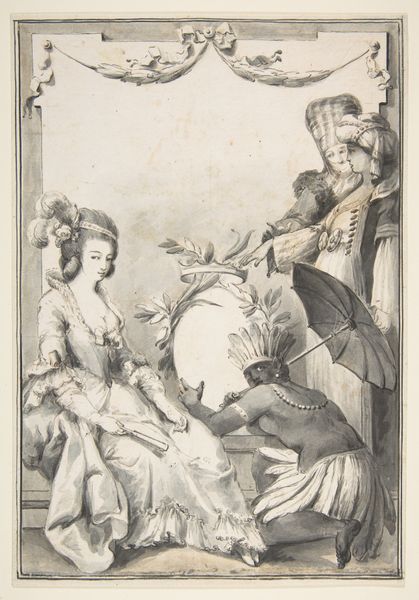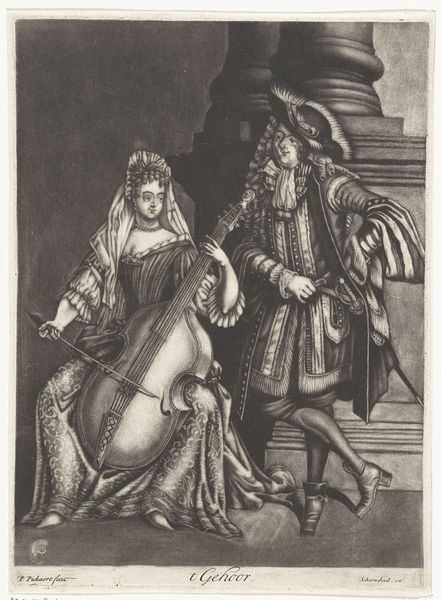
print, engraving
#
portrait
#
baroque
# print
#
caricature
#
figuration
#
portrait drawing
#
genre-painting
#
history-painting
#
engraving
Dimensions: height 188 mm, width 137 mm
Copyright: Rijks Museum: Open Domain
Editor: So, this is "Gezicht," a print made by Cornelis Boel, sometime between 1590 and 1621, and currently residing at the Rijksmuseum. I am immediately drawn to the textural contrast—the smooth skin against the elaborate ruff and the intricate detail in the fabric. What do you see in the work from a formalist perspective? Curator: Precisely. Observe how the composition is structured: the figures are arranged to guide the viewer’s eye through a hierarchy of details. The bright background to the left of the lady's reflection in the mirror serves as a vanishing point, from which lines of perspective radiate. The artist uses contrasts in shading to enhance dimensionality. Note the precise linework; it's particularly effective in creating varied textures in the clothing. How does the meticulous nature of the engraving influence your perception of its meaning? Editor: It makes me think about the deliberate nature of beauty and its construction. Every detail seems so carefully placed, suggesting a commentary on vanity. But is it purely a visual exercise, or are there social commentaries in play here? Curator: The artist utilises meticulous control over line and tone, rendering the human form and textile textures with an acute awareness of structure and form. Can we ignore the presence of symbolic structures which organise it? Note, for instance, that Latin sentence which closes the picture; do you think that the presence of this text enhances or degrades the form? Editor: That's a good question. Considering its influence, I would have to say that including it enhances its visual balance. The Latin text helps ground the image. This was an enlightening overview; it allowed me to consider art beyond historical context and see it as an orchestration of formal qualities. Curator: And understanding the deliberate visual decisions allows us to discuss potential symbolic readings while acknowledging that those readings originate within the artwork itself.
Comments
No comments
Be the first to comment and join the conversation on the ultimate creative platform.

